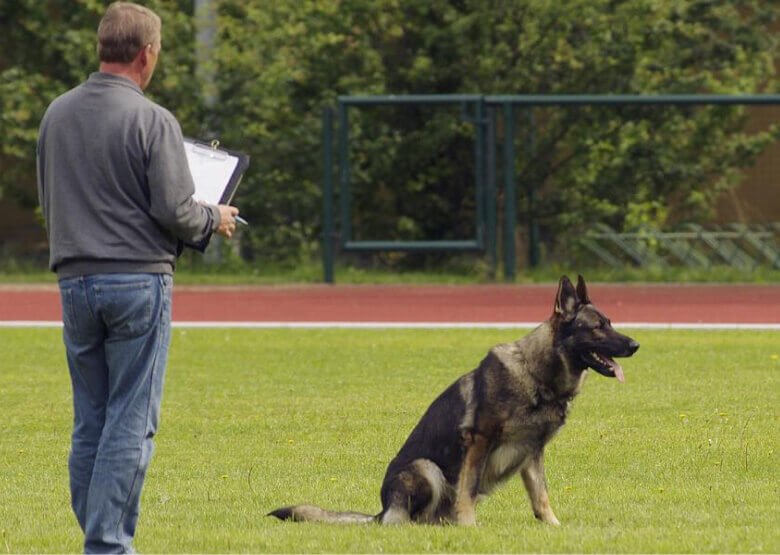Table of Contents
The existing standard of the German Shepherd breed is designed so that the dog has good working qualities. This is achieved by a harmonious combination of body parameters. Another focus is character. Dogs with an unstable psyche are immediately culled at the shows.
German Shepherd Breed Standard
The appearance of the Shepherd dogs who were predecessors of German Shepherds has changed over the years creating a new breed. The size of an adult German Shepherd differs from breeder to breeder, while other parameters didn’t remain the same, either. The first animals had nothing to do with modern dogs. The gorgeous Horand von Graffarth, who was the first in GSD history to enter into the breed registry, would look simpler today compared to the present-day beauties of the ring.
Show parameters slightly vary in different countries. American German Shepherds have such a steep slope of the back that the animals seem to be sitting all the time. Working group dogs are not like show dogs. They have fewer body structure requirements. In addition, the breed continues to improve, and sometimes it is not easy for experts to choose an ideal dog since matching the parameters does not always result in a completely perfect dog.
German Shepherd Size
The German Shepherd is not an immensely massive dog. Moreover, exceeding the parameters is culled. Usually, the size of the German Shepherd varies from 24 in (60 cm) to 26 in (65 cm) at the withers in males. The height of females does not exceed 24 in (60 cm), and the lowest indicators are 22 in (55 cm) at the withers. The weight of a male can be 65-90 lb (30-40 kg), while females are more gracious and weigh 50-70 lb (22-32 kg).
The Head of a Purebred Dog
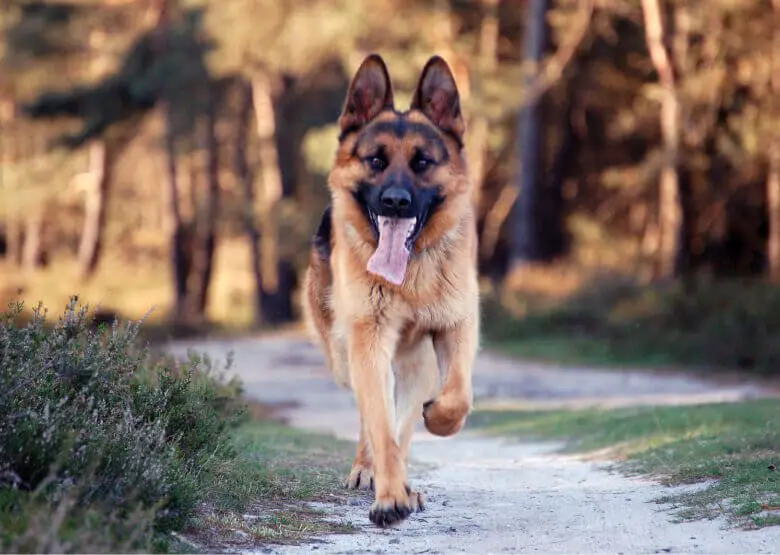
The head of a German Shepherd resembles that of a wolf. Large erect ears and an elongated muzzle of a Shepherd dog also remind us of that forest predator. At the same time, males and females differ in their muzzle expressions. The male has an imperious and courageous look like the true leader of the pack. Females have a gentler ‘facial’ expression.
According to the standard, the skull of a purebred dog has equal length and width. The ratio of the skull’s length to the muzzle is 1:1. The main parameter is the parallelism of the facial and cranial axes. If we place one palm along the muzzle, and the other on the superciliary arches of the dog, the palm should remain parallel.
Shepherd’s Eyes
The eyes of the dog have a semi-lateral setting, and they are dark in color according to the standard. The darker the eyes, the better. Though, dogs with yellow eyes are rejected, as it makes the muzzle’s expression cold and incredulous.
Ears
The ears are erect and wide at the base, pointed on top, while set high on the skull. Puppies have floppy ears that can stand up from 4 to 8 months old, and this is not a matter of concern. It’s worse if the puppy starts to hold the ears erect too early. This indicates the animal’s weakness because its ears are too lightweight.
Teeth
The animal must have a full set of teeth and a scissor-like bite. A direct bite, underbite, or overbite are rejected. Edentulous dogs are also weeded out.
German Shepherd’s Dimensions
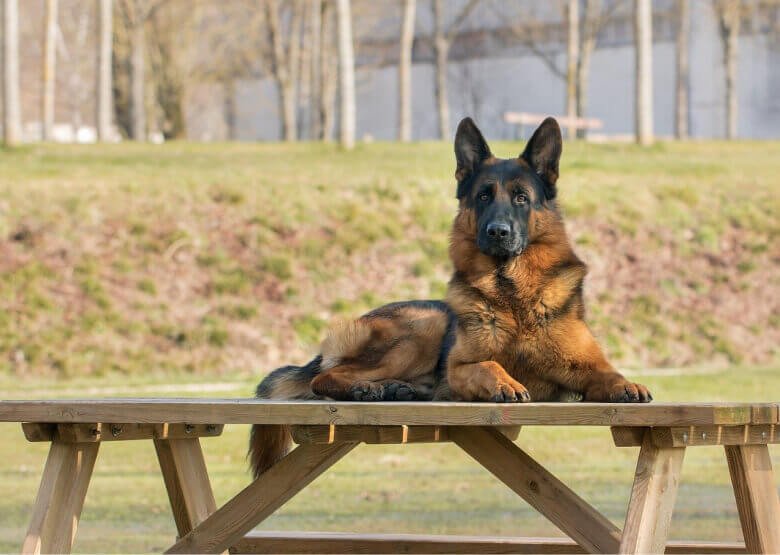
The German Shepherd should have an elongated body. Its torso must fit into a rectangle. The body length can exceed the height at the withers by 10-17%. In this case, the back is sloped towards the pelvis. The front part is higher than the rear one. This is related to the fact that the momentum during the run is transmitted from the rear part. One of the characteristics of a Shepherd dog is its endurance, so the body and limbs are the ideal mechanisms for easy trotting.
Neck
The neck should be 35% of the dog’s height at the withers. Ideally, the neck axis has a slope of 45 degrees to the horizontal position and 90 degrees to the shoulders. The neck’s girth of a German Shepherd is not a standard parameter, and it may vary. The approximate indicators are 20-22 in (50-55 cm).
Breast
Chest parameters are rarely measured at exhibitions. An overall inspection is usually enough. On average, the chest girth of a German Shepherd is 33-35 in (85-89 cm), but this depends on the proportions of the dog. The depth of the chest and its width is taken into account.
Shoulder to Shoulder Blade Ratio
Not a long time ago, a 90-degree angle between the shoulder blade and shoulder was considered ideal, though such parameters were almost impossible to achieve. Nowadays, the range of 98-110 degrees is allowed. The inclination of the shoulder blade and shoulder towards the horizontal line matters. The shoulder blade should have an inclination of 54 degrees to the horizontal line, while the shoulder can have 55-60 degrees. In the ring, a long straight shoulder is valued.
The Role of the Back in the Dog Movement

The high withers are sloping. It provides traction with the back and helps transmit momentum when moving. The back is long, formed by 8 vertebrae, and has well-developed muscles. It is the conductor of the movement momentum. The loin is short and wide. It connects the back to the rear pushing part. The hindquarters are long, wide, and muscular. Almost all the muscles involved in the movement are attached to it. Its inclination to the horizontal line is 27-31 degrees.
The Role of the Hind Limbs
In the hind limbs, the thigh bone and shinbone should be located at an angle of 120 degrees juxtaposed to each other. This is the optimal ratio at which the dog can move easily and smoothly. A more obtuse angle will not allow it to make a wide step, and a less obtuse one will reduce the strength of the limb.
Tail
The tail has many functions. It:
- protects the genitals and anus;
- acts as a means of communication;
- functions as a rudder.
By standard, the tail should reach the ankle, though, in modern dogs, it is usually longer. Some dogs have to keep their tail up to prevent its dragging onto the ground. A too lowly attached tail is considered a violation.
German Shepherd Coat
The coat of the proper German Shepherd dog is thick and has an undercoat. The outer hair is stiff and lies close to the body. The fur is short on the muzzle and longer on the neck. On the back of the front legs, the hair may go down to the pastern, and there may be feathering on the hind legs.
Colors of Purebred Dogs
The German Shepherd’s colors can be black, gray, black and brown, and red. Light gray spots are allowed. A combination of gray and black or a black mask are also possible. White color can be rejected if it is represented by noticeable spots on the chest, excessively light colors on the insides, white nails, and an uncolored nose tip. The nose cannot be pink or brown, but only black. Dogs with light-colored eyes are not allowed to be bred.
The Temperament of the German Shepherd
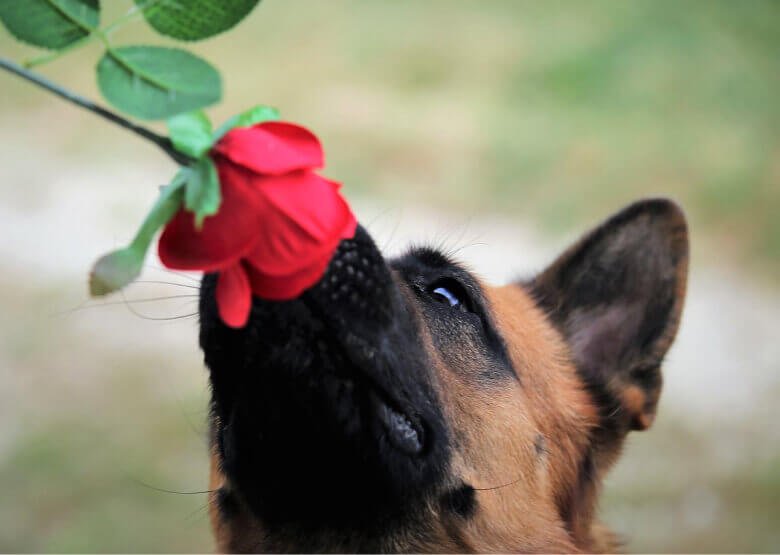
Not only an exterior is important for the German Shepherd since it is a working dog. If at first, it was only a shepherd, later on, ‘universality’ was added to it. A Shepherd is a working dog ‘of all trades’. It must be hardy, tireless, and well-trained. The pet must have close contact with its owner and be able to make independent decisions. There has been a tough culling of dogs with an unstable psyche for many years.
The German Shepherd show is a special sight. The dog must demonstrate its best characteristics:
- Peculiarities of temperament and a threshold of excitability, showing how fast the animal responds to stimuli.
- Search work: how an animal can take a trail.
- Protection of the owner, property, and territory.
- Fighting qualities: how much the dog likes to fight.
- Confident behavior in stressful situations.
- Distrust strangers and unfamiliar objects.
- Endurance and perseverance, work in any situation.
The dog must show courage and observation skills, be attentive, and make independent decisions according to the situation.
Untrained dogs that do not know how to follow commands are rejected. Refusal is received by nervous and cowardly dogs, pets showing aggression, and not having sufficient contact with the owner.
A Show Dog and Its Condition
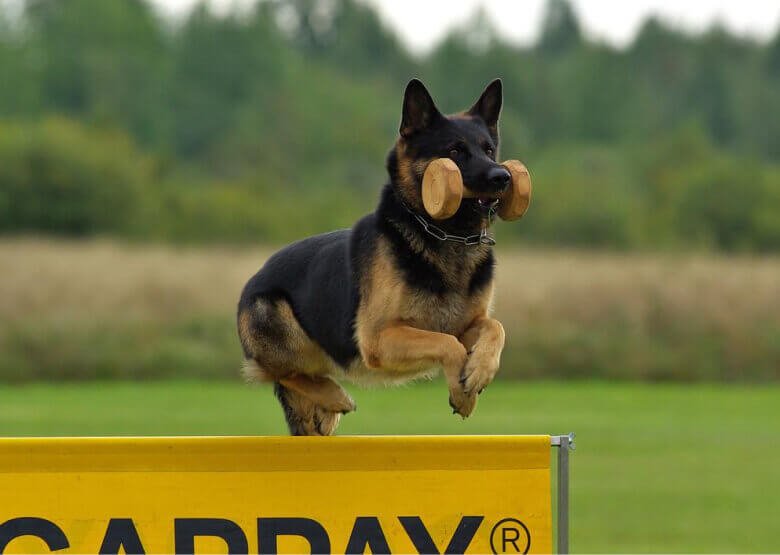
Having got an ideal pedigree dog, you may not receive high points at the show. Education and training make up only one side of the coin. The dog must be of the proper constitution, meaning adequately groomed and fed. An immensely overfed dog will not get high points, just like an emaciated one.
The condition of a show pedigree dog, as a rule, differs by this indicator in an animal of working breeding. The latter may have a thinner layer of fat. Evaluation of working dogs by the exterior is not carried out at all, since their success in competitions is more important. According to it. The dogs of this variety are evaluated.
These two variations of dogs have been bred since the time when the kennel owners themselves were divided. Some focused on beauty, while others paid attention to speed and endurance. Nevertheless, pedigree dogs did not become decorative ‘sissies’.
Violations in the German Shepherd Standard
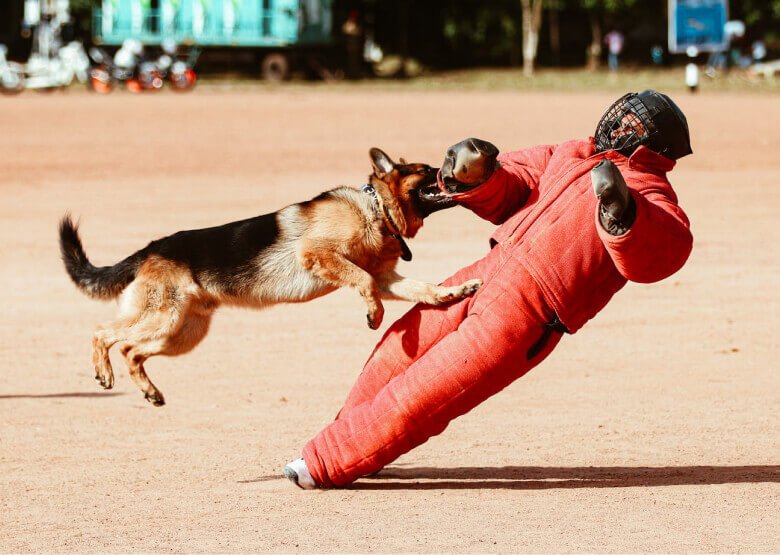
What can a dog be rejected for is, for example, misbehaving in the ring. Aggressive behavior towards juries or other dogs, cowardice, or disobedience may lead to disqualification in the show.
According to physical parameters, dogs with cryptorchidism are refused, too. Moreover, one of the conditions of the standard involves pronounced gender characteristics.
It is important that the height at the withers of a German Shepherd does not exceed the standards of the breed.
A dog that is overweight or has a loose body structure is also not suitable for a show. Incorrect proportions, as well as the insufficient height at the withers, are signs of the standard violation. Too lightweight or heavy bones, long or curvy legs, and a docked tail will not allow the pet to compete with its counterparts.
Culling can also be carried out on the following grounds:
- too light coat color or irregular pigmentation;
- malocclusion or incomplete teeth;
- inappropriate parameters of the muzzle;
- soft or floppy ears;
- a forked or non-pigmented nose.
Dogs with defects and violations are not allowed to breed, either.
